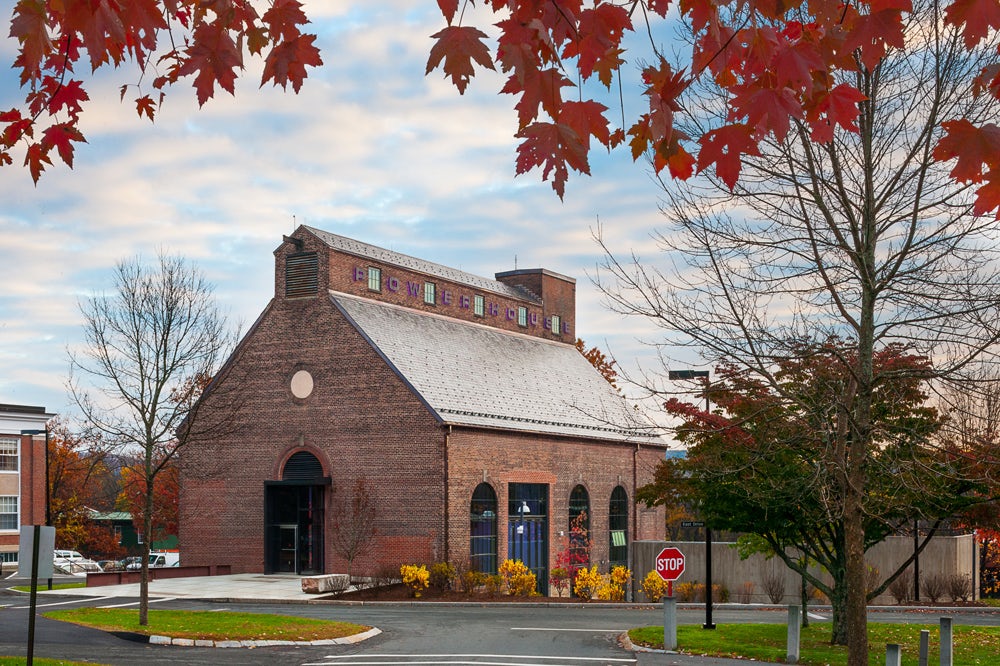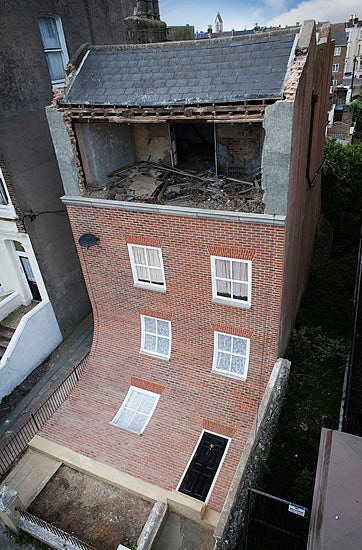Architects: Want to have your project featured? Showcase your work by uploading projects to Architizer and sign up for our inspirational newsletters.
More often than ever, architects are concerning themselves not with building things, but with re-building them — rethinking, redesigning and repurposing existing structures to meet new needs. These needs may include concerns about sustainability, lack of resources, legal restrictions or even historic preservation.
Rather than hindering creativity, however, recycling old buildings offers architects opportunities to reanimate unique spaces, engage with architectural traditions, and build off the legacies of established sites. Repurposed architecture can play a role in revitalizing communities, as well. Increasingly often, old factories and other industrial structures are becoming the centers of new economies or — ironically — sites of leisure.
Repurposed buildings are not simply reincarnations of their former selves; an arts center does not have the same relationship to a community as a factory. But these projects do not act as replacements or departures from what preceded them, either. When architecture is successfully repurposed, it does not hide its history, but instead becomes a relic, projecting its identity into a new age, and embodying the contradictory qualities of tradition and innovation, of preservation and progress.
Finally, the repurposing of architecture is nothing new. The Hagia Sophia has been rebuilt, redesigned and redecorated many times in its lives as church, mosque and museum. Similarly, the Kremlin has housed many regimes since its 14th-century construction, and undergone a corresponding evolution of forms. The changing roles of architecture often reflect or enforce political ideologies and claims to power. Nowadays, however, architecture is often transformed not through political developments or military conquests, but through changing communities and geographies. Such spaces are not seized because they are the centers of power, but are reoccupied in the hope that they may regain the power they once held.

© Gangoly & Kristiner Architects

© Gangoly & Kristiner Architects
Former Town Millby Gangoly & Kristiner Architects, Graz, Austria
For the Former Town Mill, Gangoly & Kristiner Architects transformed a 19th-century mill in Graz, Austria into a modern apartment complex. As the mill is a protected site, the architects had to work around its existing floor plan and maintain its original materials. The resulting design preserves the mill’s large, open, communal spaces and showcases the structure’s beautiful timber skeleton.

© Bruner/Cott & Associates, Inc.

© Bruner/Cott & Associates, Inc.

© Bruner/Cott & Associates, Inc.
Amherst College Powerhouse Student Event Space by Bruner/Cott & Associates, Inc., Amherst, Mass., United States
The Amherst College Powerhouse Student Event Space, by Bruner/Cott & Associates, also maintains the integrity of its original building materials. The architects emptied the interior of this former coal power plant, leaving an open, multi-purpose space for the Amherst College community. The bare brick walls have received minimal treatment to preserve its patina, while the building’s large industrial doorways have been filled with glass panes, illuminating the space.

© Miran Kambič

© Miran Kambič

© Miran Kambič
Ptuj Performance Centerby ENOTA, Ptuj, Slovenia
In Ptuj, Slovenia, the firm ENOTA transformed a Dominican monastery from the 13th century into a modern Performance Center. The site, which was already a palimpsest of Romanesque, Gothic and Baroque architecture, is a stunning context for the sleek, contemporary forms which make up the newest additions. These many architectural layers do not clash, however, nor do they attempt to conceal their differences. Instead, they complement each other, the aged monastery interiors providing a warmth to match the elegance of ENOTA’s design.

© Diller Scofidio + Renfro, Field Operations

© Diller Scofidio + Renfro, Field Operations

© Diller Scofidio + Renfro, Field Operations
High Line by James Corner Field Operations and Diller Scofidio + Renfro, New York City, N.Y., United States
New York City’s High Line, by James Corner Field Operations and Diller Scofidio + Renfro, not only plays homage to its original identity as an industrial rail line, but also acknowledges its years of disuse since. The structure — now a long, public walkway floating over the city — still features remnants of its original railroad tracks, and embellishes the extensive greenery which had already begun to overtake it prior to its revamped design.

© CN10 Architetti

© CN10 Architetti

© CN10 Architetti
Former Monastery of San Giuliano by CN10 Architetti, Bonate Sotto, Italy
The Former Monastery of San Giuliano, renovated and repurposed by CN10 Architetti in Bonate Sotto, Italy, is a residence on the site of a structure built around the eighth century CE. The original building has gone through several transformations in the many centuries since. The architects intended not only to preserve the historic structure and adapt it to a new role, but also to restore the building, bringing it closer to its original form. The project included adding necessary amenities while removing materials and additions from prior renovations.

© Max Fordham

© Max Fordham

© Max Fordham
Newport Street Gallery by Max Fordham, London, United Kingdom
A new home for Damien Hirst’s art collection, and the winner of the 2016 RIBA Stirling Prize, is the Newport Street Gallery, by Max Fordham in collaboration with Hirst and Caruso St John. The gallery is situated in an old industrial building which used to be a workshop for theater carpentry. The final structure is a conglomeration of new and old, with modern brick façades blending seamlessly with the original. Distinctive elements of the workshop, including its saw-tooth roof, are preserved and complemented by evidently modern features, including sloping, organically shaped stairwells.

© Alex Chinneck

© Alex Chinneck

© Alex Chinneck
From the Knees of my Nose to the Belly of my Toes by Alex Chinneck, London, United Kingdom
Artist Alex Chinneck’s project “From the Knees of my Nose to the Belly of my Toes” reclaims architecture not for reuse, but as a medium for artistic expression. Chinneck transformed an abandoned London home by pulling down its brick façade, making it appear slumped on the ground as if washed away by the rain. The dilapidated top floor of the home is revealed where the façade has peeled away. The surrealistic structure not only appears to defy logic, but draws attention to the economic decline of the surrounding community. Combining humor with social commentary, Chinneck’s design plays upon the relationship between architecture, community and human emotions. The work hints at the effect that repurposing architecture, or abandoning it, can have on those around it.
Architects: Want to have your project featured? Showcase your work by uploading projects to Architizer and sign up for our inspirational newsletters.




